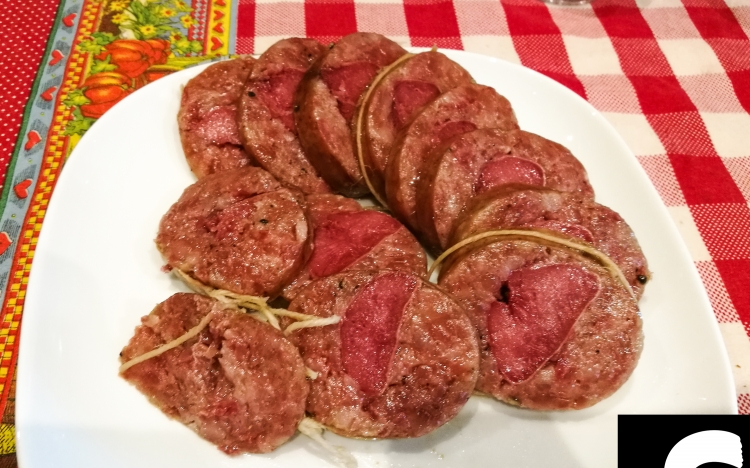
Lengual
The “lengual” is a cotechino which contains the pork’s cured tongue.
Product name, including synonyms and dialect terms
Cotechino with tongue, lengual.
Territory interested in production
The municipalities of the Pedemontana della Marca Trevigiana.
History
The “lengual” is a cotechino which contains the pork’s cured tongue. It is a typically winter product, characteristic of every place where pigs are raised. Cotechino is in fact a product created to use, for food purposes, the hardest and fattest parts of the pig such as the rind, ears and snout. The typicality is given by the use of traditional local drugs.
Product description
The lingual (lengual) of the foothills is produced using the pig’s tongue previously salted for a few days (in salt and flavorings). The pig’s tongue makes up about half of the total weight. The minced side is made up of about 75%, fatty pork (rind cuts for 40-50%, throat cuts for 10-20% and head meat for the remaining 15-20%) and the remaining 25 % from lean pork from shoulder cuts. The minced meat is passed through the 6 mm hole mold. The product has a cylindrical shape with a diameter ranging from 8 to 10 cm, with a length between 15 and 25 cm. The weight of the finished product is around 500-600 g.
Production process
The mixture is flavored to 2.4 ÷ 2.8% with (sea) salt and flavored with broken pepper or with the dose (at 0.5%, it contains aromas of various types including cinnamon and clove). After careful mixing, the dough is stuffed, placing the tongue in the center, in natural casing and tied by hand. The tongue is previously salted by placing it in brine for at least a day. The dough is made in part with the use of a machine but is completed manually. The bagging is done by machine while the knotting is manual. The drying phase requires a couple of days at a temperature of about 12 ° C. The ideal for maturation is a week, after which consumption is recommended.
Availability
The “lengual” is a product with limited availability, both because it is produced in small quantities, since it is possible to obtain only one for each pig, and because it is usually produced for self-consumption. However, it can occasionally be found directly at the producers or tasted in some farmhouses or restaurants typical of the area.
Uses
The “lengual” is consumed after boiling it for a few hours and goes well with polenta, horseradish or steamed vegetables.




